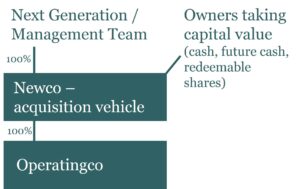Fast on the heels of this week’s Tax Tuesday about the deficit and the increase in taxation which is bound to flow to tackle it, we learn that Mr Sunak has asked the Office of Tax Simplification to conduct a review into whether Capital Gains Tax is fit for purpose.
The implication is clear.
Do not be surprised if a serious move to harmonise CGT with Income Tax has just begun. As well as yielding potentially material revenue for the Exchequer, the move would not suffer many votes – on the contrary, it might even help to secure the “new” Conservatives from the former Labour heartlands.
CGT is a tax on disposal of “chargeable” assets, which has been with us since 1965, and which has typically been levied at significantly lower rates than those applied to income. For example, income above £150,000 in a tax year suffers a 45% Income Tax rate (or 38.1% where it arises in the form of company dividends), while a capital gain at that level suffers a 10%, 20% or, at worst (in the case of residential houses), 28% rate of CGT.
Owner-managers realising capital in their business of, say, £2m, might reasonably expect to pay £200,000 of CGT on that, at the current time. With a CGT aligned to dividend income, however, that tax charge would increase by a staggering £562,000, to £762,000. This threat has to be taken seriously. It follows the major downgrading of Entrepreneurs’ Relief in the March Budget this year and it is a logical next step under all the circumstances.
What can be done?
Well, one thing which is under the control of many owner-managers is the question of succession – whether to the next generation or to the management team – with all due retention, as necessary, of the right to continue to work and get paid.
Succession provides an opportunity for a controlled “exit” at a price which falls to be taxed under the favourable CGT code, even if/when the monies to pay for that exit might come out of profits over future years. All family business owners ought to be addressing succession plans which can serve to extract significant “income” at CGT rates, irrespective of the threat to the lower rates, but the landscape adds increased urgency for all to consider how a revised ownership structure could work for them.
Below is a typical ownership structure following a succession where a variety of positive objectives have been achieved, just one of which is the tax efficient extraction of profits on a low-taxed, CGT basis.
To discuss your medium term plans and how / if these might be accelerated to lock in the value of the current regime, without losing access to ongoing benefits from the business, contact your usual relationship principal or email tax@haroldsharp.co.uk.
Notes relating to above ownership structure:
1. Owners realise a capital disposal of their former ordinary shareholding – locking in their 10% CGT on that value
2. Newco pays Owners out of existing cash and future cash generated by Operatingco;
3. Owners maintain protections and rights of veto to ensure their capital is fully paid
4. Owners remain involved in the business and earn income for their ongoing inputs
5. Next Generation / Management Team can now exercise initiative (subject to Owners’ approvals) and begin to add value which accrues to them
6. Owners might retain special class of shares (eg redeemable shares) which continue to qualify for protection from Inheritance Tax


